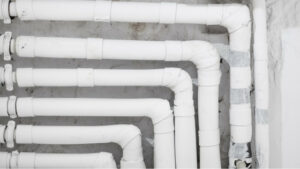What Is a Sewer Cleanout? 2021
A home’s plumbing system is an intricate network. One of the most important components of this network is a sewer cleanout. When you ned a sewer cleanout in Appleton, WI, you can always trust Tureks Plumbing. We provide 24/7 emergency plumbing. Below, we discuss sewer cleanout and what you can expect.
What is a sewer cleanout?
According to trusted Wisconsin plumbers that service Fox Valley and Applegate residences, the sewer cleanout is a capped pipe that enables people to gain access to a clogged sewer line so that they can clean out any blockages. It is a requirement for the connection of the house’s main drain to the house sewage. Usually located no more than three feet past the edge of the home, homeowners can identify it by the “S” stamped on the concrete or painted on the curb. Underneath this marker is the home’s sewer line which is connected to the city sewer. However, for homes with a septic system, the cleanout is placed between the house and the septic tank.
If it’s placed where it should be it usually comes with a cap that says “clean out.”
Do all homes have a sewer cleanout?
The short answer is no. Not all homes are built to code therefore some houses actually do not have one and just rely on a basement cleanout. These homes are at a great risk of indoor flooding due to the build-up of debris in the drainage system, says our friends at Gilmore Heating and Air, a trusted Sacramento plumber.
Are cleanouts always located in the same places?
For homes that are built to code, the answer is usually. However, a lot of residences have the sewers added after the construction of the home. To locate the cleanout for such houses, plumbers typically just follow the line from the street side connection and the house.
Do homes have only one cleanout?
A lot of homes actually have multiple sewer cleanouts. The extra cleanouts are often capped stubs or pipes sticking out of exterior walls, and they can also be found in basements and crawl spaces. At times, they are even located in the attic for the easy removal of obstructions in the vent of the drainage system. Multiple cleanouts are created for the convenience of accessing both lateral and vertical drains in people’s homes.
Sewer cleanouts, however, are believed to be the most essential because this help prevent drains in the house from getting backed up and directing water (dirty water, mind you) back into the house.
Given the special function of a sewer cleanout, it’s imperative that plumbing professionals install it correctly. Your Fox Cities plumbers at Turek’s Plumbing advise homeowners to save up for a sewer cleanout. It can be helpful to have a cleanout installed if there are repetitive blockages in the drainage system. If you’re having difficulty with your plumbing system, contact Tureks Plumbing today!
Editor’s note: This post was originally published in August 2016 and has been completely revamped and updated for accuracy and comprehensiveness.



